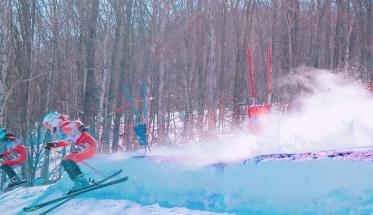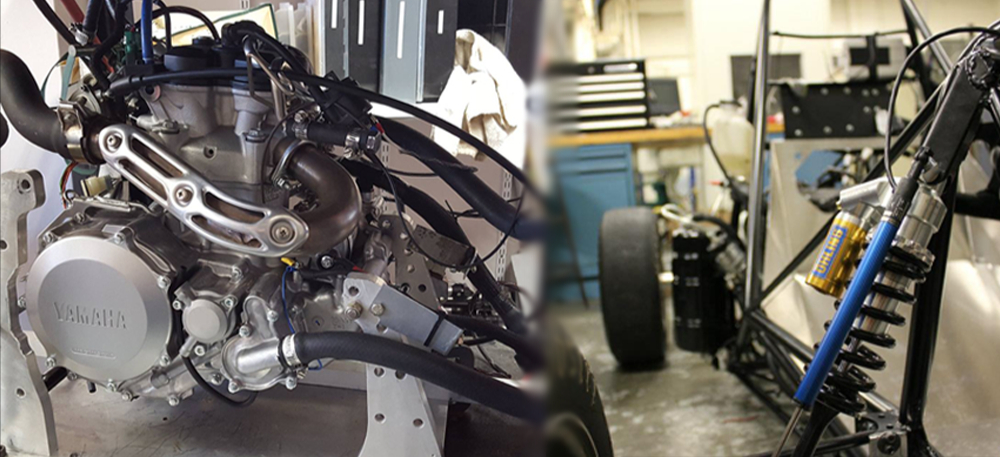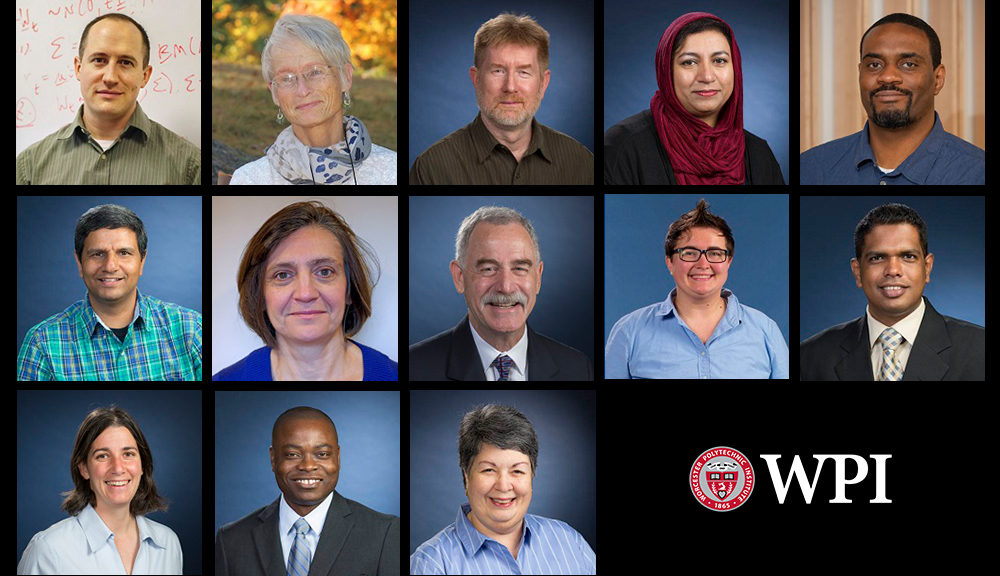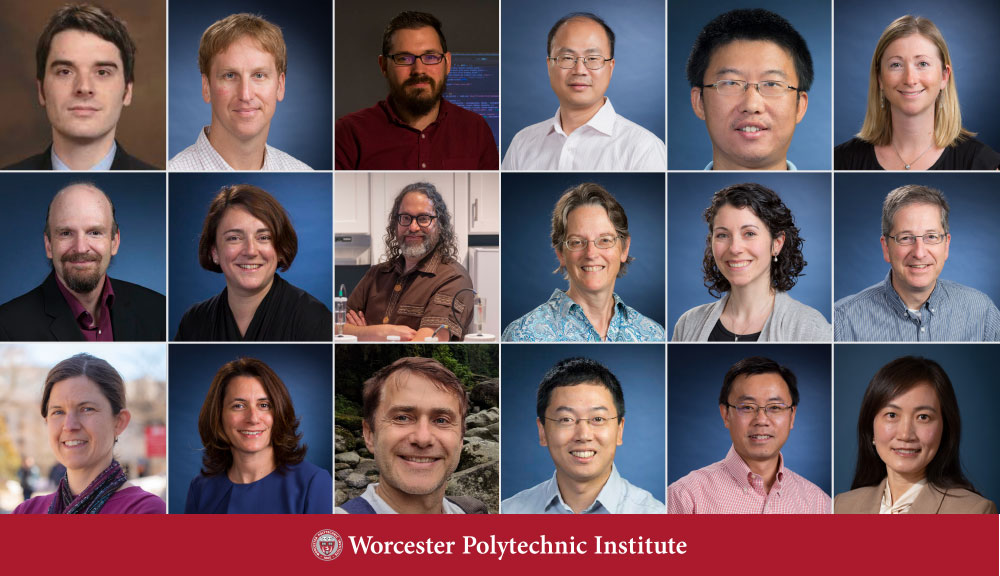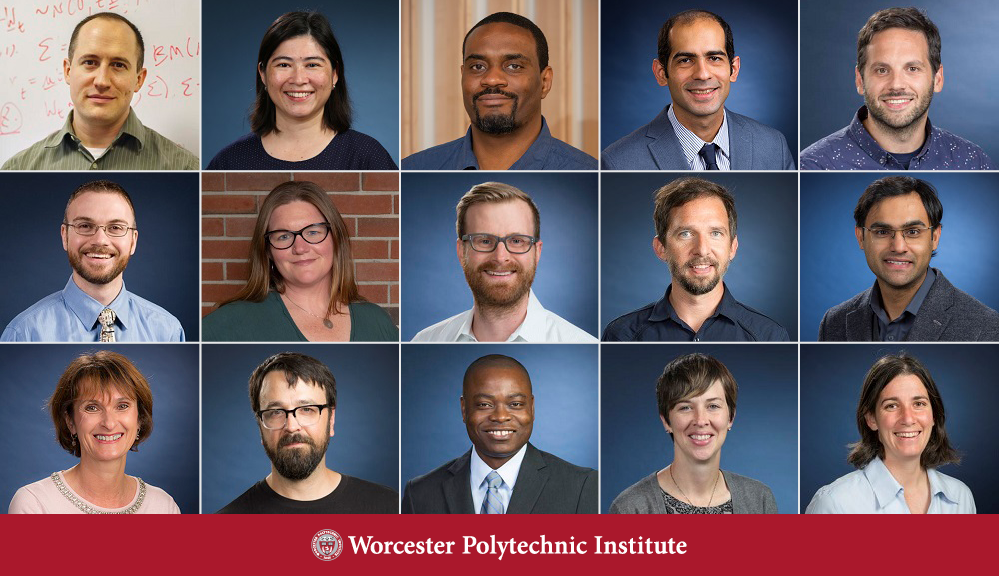As any entrepreneur knows, business sense is an acquired skill. For some WPI students, the Robert H. Grant Invention Awards offer a chance to apply their engineering skills to an authentic and innovative business use.
According to associate director of the Foisie Business School Gina Betti, the course-based award has a long history of championing innovation. “The first Robert H. Grant Invention Awards competition was offered in 2003 in a joint [chemical engineering and manufacturing engineering] course through professors Jim O’Shaughnessy and Rick Sisson,” she says.
Since that first successful competition (known as “The Green Product Design Contest”), students and faculty members have taken up the challenge in courses where the elements in the curriculum might lead to innovative results. The $1,500 prize total is made possible through an endowment given by Robert H. Grant '42 and his wife, Barbara, who believed in encouraging the spirit of entrepreneurship.
This year, mechanical engineering professor Christopher Brown’s Technology of Alpine Skiing course finished out C-Term with a Grant competition, solving technical problems using axiomatic design to create things that could reduce injuries and make skiing more enjoyable and improve performance.
According to Brown, the objective of the class is to cover many aspects of engineering in the context of skiing and snowboarding. Brown developed the course in 1996 at Thayer School of Engineering at Dartmouth College when he was on sabbatical. As an NCAA All-America ski racer at the University of Vermont in 1973, Brown traces his influence back to Mickey Cochran, coach at UVM.
“Mickey was a mechanical engineer who applied engineering principles to innovation in ski racing technique,” says Brown. “He coached all four of his children to ski in the Olympics and on to the world cup.” Brown has worked on national and international standards for skiing and has been presenting and publishing on the technology of skiing since 1983.
Students in the course aren’t necessarily skiers. Jasper Rankin ’22, who is a skier, worked with Tyler Larouche ’22, who is not a skier, to design a more aerodynamic racing suit to help racers go faster. “It’s interesting to take engineering into skiing,” says Larouche. And, says Rankin, to consider every detail that goes into the design. “We looked at all the different types of races in alpine skiing and how fast the racers go,” he says.
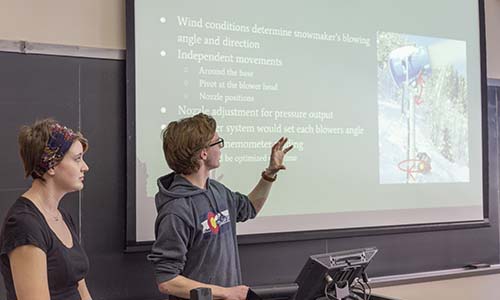
Erin McCann ’19 worked with fellow seniors Amanda Alves and Zoe Schwartz on designing a robotic device to lay down cross country skiing tracks without direct operator use. “As a senior, I wanted a class where I could apply technical skills,” says Schwartz. Many students say they had to recall information learned in previous courses to make their designs. “It was interesting to learn how to apply physics to skiing,” says McCann. “It opened my eyes to what I never thought of and to see it from that perspective.” And while this team didn’t have enough time to develop a prototype, they have set the stage for other students to pick up where they left off and continue this project.
Relevant and Innovative Designs
Since 2004, Brown has run competitions in his manufacturing engineering, mechanical engineering, and materials engineering courses, says Betti. Each year, outside judges (many of them alumni) evaluate the students, their presentations, and their product relevance and potential. Generally four to six courses, both graduate and undergraduate, participate annually, with approximately 50 competitions taking place over the years.
“They all have done good jobs at applying Axiomatic Design to solving design problems relating to snow sports,” says Brown. “The objective of the course is to introduce a variety of engineering problems in the context of snow sports. This is a great opportunity to practice a rigorous, design method, based on established design theory (by Nam Suh, who got his first honorary doctorate from WPI).”
Judges for this recent event included Foisie Business School assistant teaching professor Walter Towner ’83 (BS), ’01 (MS), ’03 (MS), ’13 (PhD), an avid skier and hiker; director of the Haas Technical Education Center and director of the Center for Innovative Manufacturing Solutions Toby Bergstrom ’93 (BS), ’95 (MS), who was on the WPI ski team as an undergraduate and skied for the same high school in Vermont that Brown did; Roy Mikkelson, son of Strand Mikkelson, founder of Strand’s Ski Shop; and Helmut Zsifkovits, visiting professor from Montanuniversität Leoben in Austria. They evaluated the nine teams in areas including innovation and creativity, technical merit and feasibility, quality of presentation, and the overall chance of the invention hitting the market.
“Our professors give students tough challenges every year,” says Betti. “Even with the quick turnaround, over the years, teams have presented the judges with mock-up or even fully functioning prototypes with a provisional patent applied for, although most are still in the design stages.
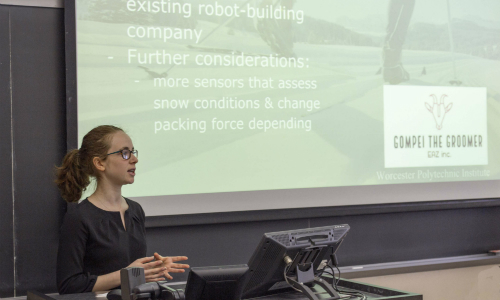
“The most rewarding part of leading these competitions is seeing the ideas stretch from paper napkin to working prototype,” she says. “Seeing tremendous personal and professional skills growth in an ECE or ME student with little background in ‘business concepts,’ but yet being able to incorporate these business details so well into their presentations like pros."
Presenting to the Panel
The experienced judges, who come in from industries of the represented majors, ask pointed questions, says Betti, and they expect professional answers. Presentations require students to venture out of their comfort zones and display adaptability and grace under pressure as things don’t always go as planned. Teams are encouraged to make a working demo video, so if there is any kind of snafu in the pitch, the judges can evaluate based on the video.
The Robert H. Grant Invention Awards presentations have been held in engineering design courses including Axiomatic Design of Manufacturing Processes, Electrical and Computer Engineering Design, Introduction to Engineering Design, and Surface Metrology. Business courses include Creating Value through Innovation, User Experience Applications, and User Experience and Design.
For Betti, watching the presentations over the years never reduces the thrill of the potential she witnesses. “I get to see every ounce of passion and determination poured into the students' products or service ideas on display in succinct, competitive presentations,” she says. “Our students truly want to make products that solve important global problems.”
- by Julia Quinn-Szcesuil
